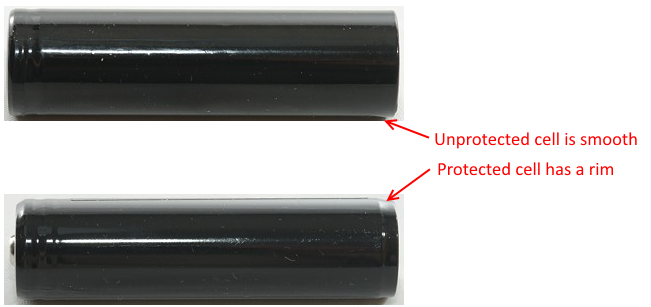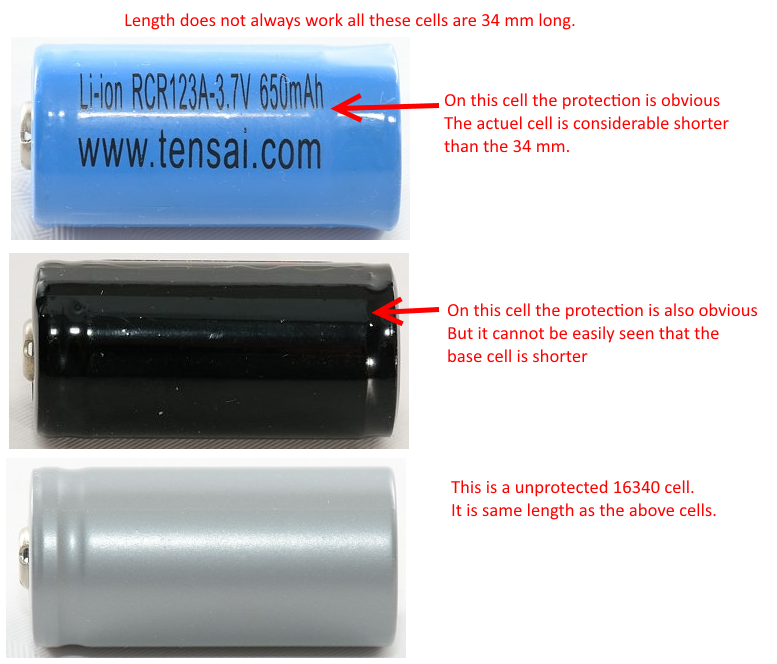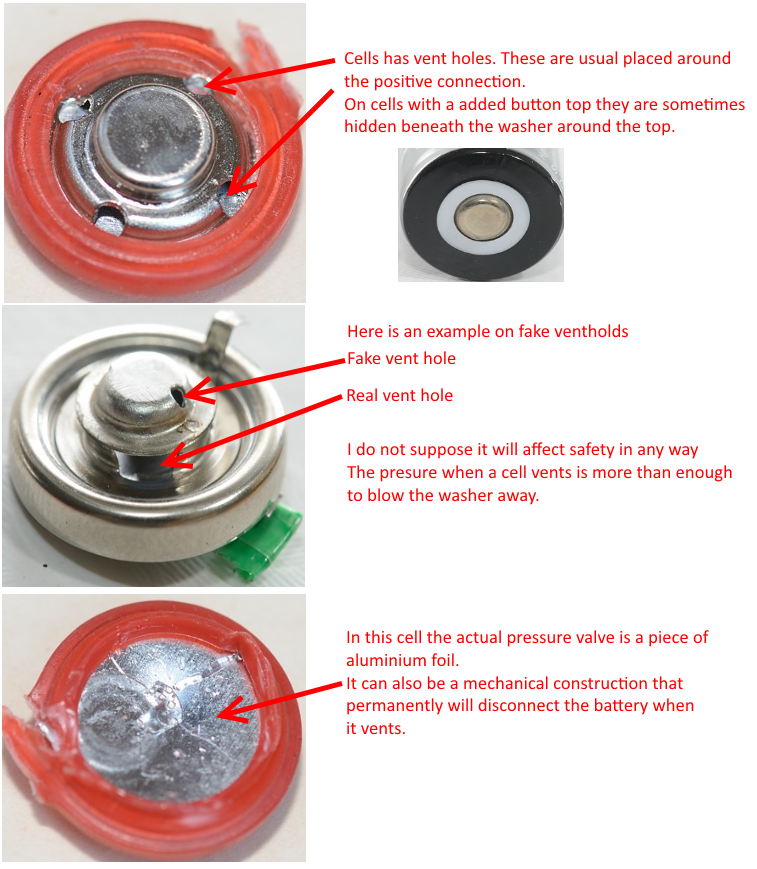Is my battery protected?

Not all batteries are protected and unprotected batteries will be damaged if discharged too much.
There is a couple of ways to see if a cell has protection:

Most protections are placed at the bottom of the cell as is fairly easy to see.

Due to the protection the bottom of the cell may also look different.

When the protection is place at the bottom of the cell it always needs a connection to the top.

The length always works for 18xxx cells, also if the protection is in the front part of the cell.

With 16340 cells the length may not work always as indicator of protection or not.

The front of a front protected cell looks slightly different.
Is a unprotected cell really unprotected?
When the protection circuit is missing, will the cell just exploded when mistreated?
The answer is, of course, no, but it can easily be damaged beyond repair. The build in protection is there to prevent fire and explosions, not to prevent damage to the cell.
A cell can have two protections inside the can:

One is a pressure valve that will usual disconnect the battery permanently when it vents. This is often called a CID (Current Interrupt Device).
When a cell vents it will be with a rather high pressure that may blow the front and back of a flashlight. This is not a fault, but the last safety measure to prevent that the cell explodes.

The second protection is a PTC, this is a temperature sensitive resistor. It will have a very low resistance at normal temperature, but at a certain temperature the resistance will increase dramatically and reduce the current flow.
A PTC will reset itself when it cools down, this may degrade the cells performance.
In some modern cells this function is supplemented or replaced by HRL (Heat Resistive Layer) that will disable the battery if it gets to hot.
The PTC may not be present in high current cells and it may also be missing in cheap cells.
Notes
How is a protected LiIon battery constructed
Disassembly of cheap 18650 battery
Disassembly of some UltraFire batteries








